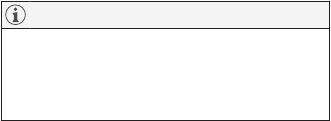SPECIFICATIONS
585
•
If the car is not charged regularly from the
mains power circuit.
•
If the car is equipped with extra equipment
that affects the car's weight.
•
The driver's driving style.
•
If the customer chooses wheels other than
those fitted as standard on the model's basic
version then rolling resistance may increase.
•
High speed results in increased wind resis-
tance.
•
Fuel quality, road and traffic conditions,
weather and the condition of the car.
A combination of the above-mentioned examples
can result in significantly increased consumption.
Large deviations in fuel consumption may arise in
a comparison with the EU driving cycles (see
below) which are used in the certification of the
car and on which the consumption figures in the
table are based. For further information, please
refer to the regulations referred to.
NOTE
Extreme weather conditions, driving with a
trailer or driving at high altitudes in combina-
tion with fuel quality are factors that consider-
ably increase the car's fuel consumption.
EU driving cycles
Official fuel consumption figures and the range
for electric operation are based on two standar-
dised driving cycles in a laboratory environment
("EU driving cycles") all in accordance with EU
Regulation no 692/2008 and 715/2007 (Euro
5 / Euro 6) and UN ECE Regulation no 101.
Since the driving cycles are also used for quality
control, there are significant requirements for
repeatability of the tests. For this reason the tests
are carried out under close scrutiny and only with
the car's basic functions (e.g. air conditioning,
radio, etc. switched off). As a consequence of this
the results from the official figures are not obvi-
ously representative of what the customer sees
during actual usage.
The regulations cover the driving cycles for
"Urban driving" and "Extra-urban driving":
•
Urban driving - the measurement starts with
cold starting the engine. The driving is simu-
lated.
•
Extra-urban driving - the car is accelerated
and braked at speeds between 0-120 km/h
(0-75 mph). The driving is simulated.
The official value for combined driving, which is
reported in the table, is a combination of the
results from the "Urban driving" and "Extra-urban
driving" driving cycles, in accordance with legal
requirements.
The exhaust gases are collected in order to
extrapolate the carbon dioxide emissions (CO
2
emissions) during the two driving cycles. These
are then analysed and give the value for CO
2
emissions.
Related information
•
Type designations (p. 570)
•
Weights (p. 575)
•
Economical driving (p. 425)
•
Electric operation range in urban environ-
ment (p. 427)

